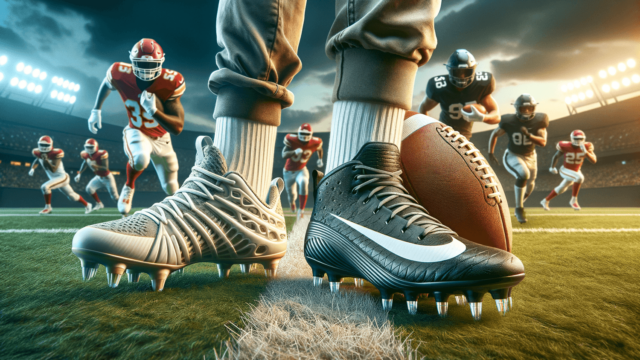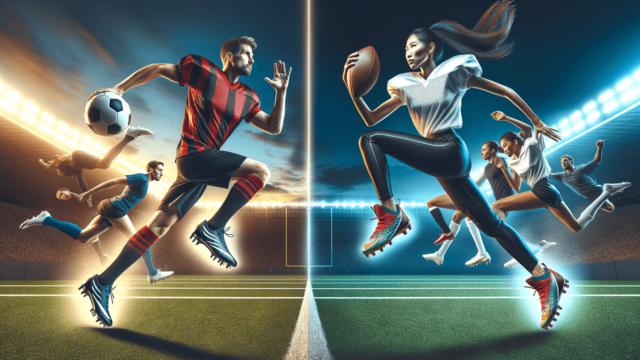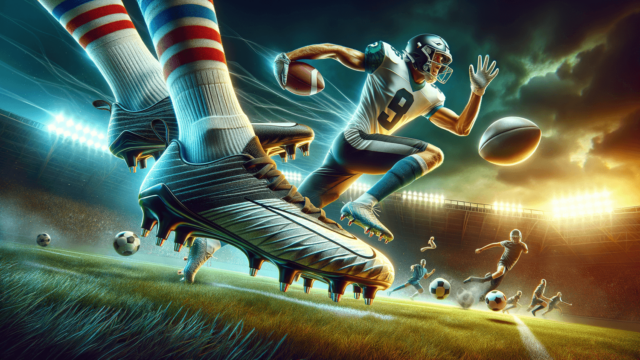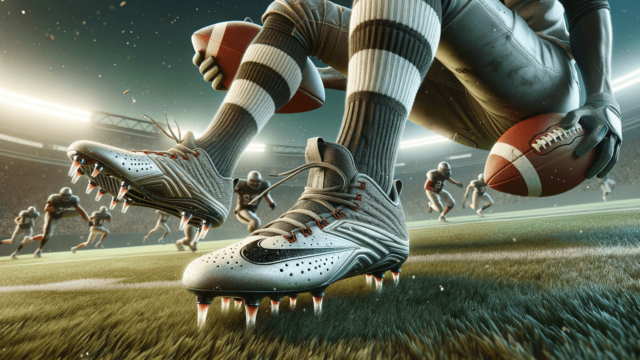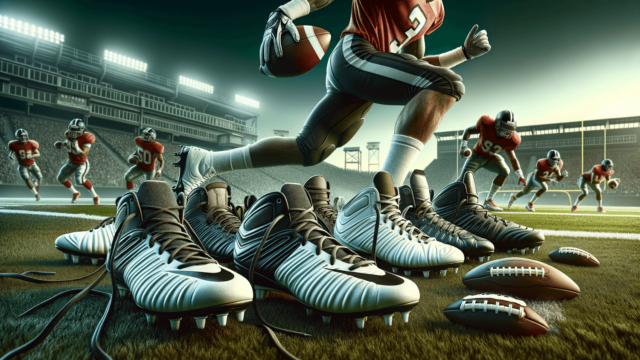
Yes, you can wear football cleats for lacrosse, as long as they provide sufficient comfort, support, and traction. However, lacrosse-specific cleats are designed with specific features tailored to the sport and may offer better performance.
Football Cleats vs. Lacrosse Cleats
Football cleats and lacrosse cleats share some similarities, as both sports demand traction, support, and comfort for optimal performance. However, there are certain differences in their design that make lacrosse-specific cleats better suited for the game.
Key Features of Football Cleats
- Higher ankle support: Football cleats generally offer more ankle support, which can be helpful in preventing injuries from lateral movements.
- Heavier and more robust: Football cleats are often built for durability and may be slightly heavier than their lacrosse counterparts.
- Stud configuration: Football cleats feature various stud configurations for optimal grip on different surfaces such as grass or turf.
Key Features of Lacrosse Cleats
- Lightweight design: Lacrosse cleats are typically designed to be lighter, allowing players to move quickly and change direction with ease.
- Low to mid-cut style: Lacrosse cleats usually have a lower cut for increased agility and mobility while still providing adequate ankle support.
- Enhanced flex points: Lacrosse-specific cleats have strategically placed flex points that allow for smoother, more natural movements on the field.
Choosing the Right Cleats for Lacrosse
If you are considering wearing football cleats for lacrosse, it is essential to examine their suitability for your specific needs on the field. Here are some factors to consider:
Comfort and Fit
A properly fitting cleat is crucial for comfort and performance. Ensure that the football cleats you choose provide a snug, comfortable fit that allows for quick movements without slipping or causing blisters.
Traction and Grip
Examine the stud configuration on both football and lacrosse cleats to determine which offers better traction for the surface you’ll be playing on. Depending on the field conditions, either type of cleats could provide the necessary grip.
Support and Protection
Lateral ankle support is essential for both sports, but if you need extra support, football cleats with higher ankle cuts may be preferable. However, this could affect your agility and mobility on the lacrosse field.
In conclusion, while you can wear football cleats for lacrosse, it is essential to weigh the benefits and drawbacks of both types of cleats to determine the most suitable option for your specific needs and playing style.
Considering Durability and Maintenance
When choosing between football and lacrosse cleats, it’s essential to consider the lifespan and maintenance requirements of each type. Football cleats may be more durable and robust, but they may also be heavier and require more maintenance to keep them in optimal condition. Lacrosse cleats are typically lighter and may wear out faster but can be less expensive to replace.
Positions and Cleat Preferences
Depending on your position on the lacrosse field, the type of cleats you choose may vary. Attackers and midfielders often prefer lightweight cleats that prioritize agility whereas defenders may lean towards better ankle support for stability during their gameplay. It is crucial to find a balance between mobility and support that best suits your position.
Transitioning from Football to Lacrosse
If you are a football player transitioning to lacrosse, using your existing football cleats can be a cost-effective way to begin playing. However, as your skills in lacrosse develop and you become more invested in the sport, consider upgrading to lacrosse-specific cleats to take full advantage of their unique design features.
Regulation and League Requirements
Before you decide to wear football cleats for lacrosse, it is advised to check with your league or team regulations to ensure that there are no restrictions on the type of cleats allowed during games and practices. Some leagues may have specific rules about the types and materials of cleats permitted on their fields.
Frequently Asked Questions about Football Cleats for Lacrosse
After reading this blog post, you may have some additional questions about wearing football cleats for lacrosse. To help you make an informed decision, we’ve compiled a list of frequently asked questions and their concise answers.
What size and fit should my cleats be for lacrosse?
Your cleats should fit snugly and comfortably, allowing for optimal performance and preventing slippage or blisters. It is best to try on both football and lacrosse cleats to determine the perfect fit for your feet, considering half sizes or different widths if needed.
Can I interchangeably use my lacrosse cleats for football?
Yes, you can potentially use lacrosse cleats for football, but it’s essential to assess comfort, support, and traction. Keep in mind that football-specific cleats may provide better support for the physical demands of the sport, while lacrosse cleats are designed for agility and mobility.
How often should I replace my cleats?
The lifespan of your cleats depends on factors such as frequency of use, playing surface, and cleat quality. Regularly inspect your cleats for worn or damaged studs and upper material. It’s generally advised to replace your cleats once they no longer provide sufficient support, traction, or comfort.
Can I customize my cleats for better performance in lacrosse?
Yes, you can customize your cleats to improve performance in lacrosse by adjusting stud configurations, using orthotic inserts for enhanced comfort, or incorporating additional ankle support. However, it’s essential to consult league regulations and ensure customization is permitted for use during games and practice.
What are some recommended brands for football and lacrosse cleats?
Some popular brands that manufacture high-quality football and lacrosse cleats include Nike, Under Armour, Adidas, New Balance, and Warrior. When choosing a brand, focus on features that cater to your specific needs on the field, such as comfort, support, and traction.
Featured Posts
- No pillar pages found.

